You are viewing the RapidMiner Studio documentation for version 9.2 -在这里检查最新版本
Using the Dropbox Connector
The Dropbox Connector allows you to read and write to files in your Dropbox account directly from RapidMiner Studio. There is no need for the Dropbox desktop client to be installed on your machine. This document will walk you through how to:
The Dropbox Connector uses an authentication mechanism calledOAuth 2.0. Instead of giving RapidMiner your username and password, you generate an access token that can be used by RapidMiner Studio to connect to your Dropbox account. This token cannot be used by any other applications and helps keep your Dropbox credentials secure.
Follow these steps to connect RapidMiner Studio to Dropbox:
Connect to your Dropbox account
In RapidMiner Studio, select the new process icon
 to create a new process. Drag theRead Dropboxoperator into theProcess看来,and click on the operator. In theParameters看来,click the Dropbox icon
to create a new process. Drag theRead Dropboxoperator into theProcess看来,and click on the operator. In theParameters看来,click the Dropbox icon to open theManage Connectionswindow.
to open theManage Connectionswindow.You can also openManage ConnectionsthroughTools > Manage Connections.

Click onAdd connection
 in the lower left of the window, give a name to the new connection, and setConnection typeto
in the lower left of the window, give a name to the new connection, and setConnection typeto Dropbox Connection:
Dropbox Connection: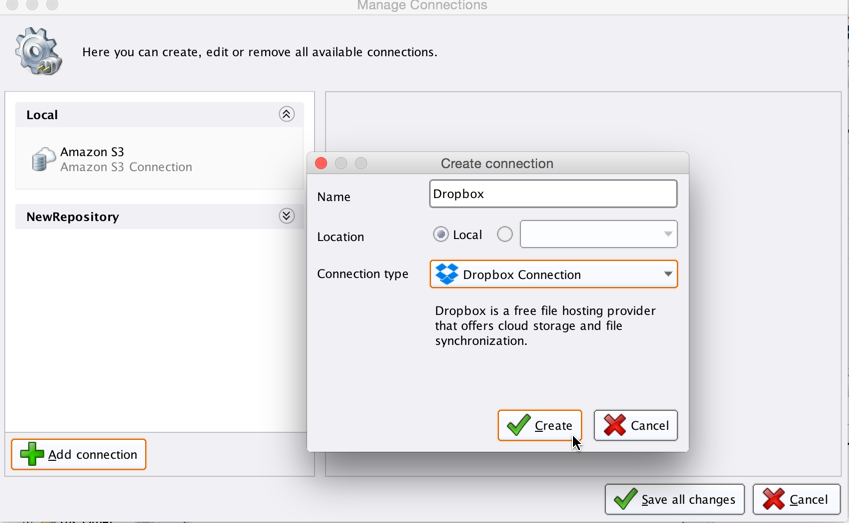
Click on
 Createand select your new Dropbox connection.
Createand select your new Dropbox connection.To the right of theaccess tokenfield, click the
 button to request an access token.
button to request an access token.Click onRequest access token
 to open the Dropbox website in your browser. If you are not already logged into your Dropbox account, you will have to do so now. You can manually copy the URL by clicking onShow URL instead.
to open the Dropbox website in your browser. If you are not already logged into your Dropbox account, you will have to do so now. You can manually copy the URL by clicking onShow URL instead.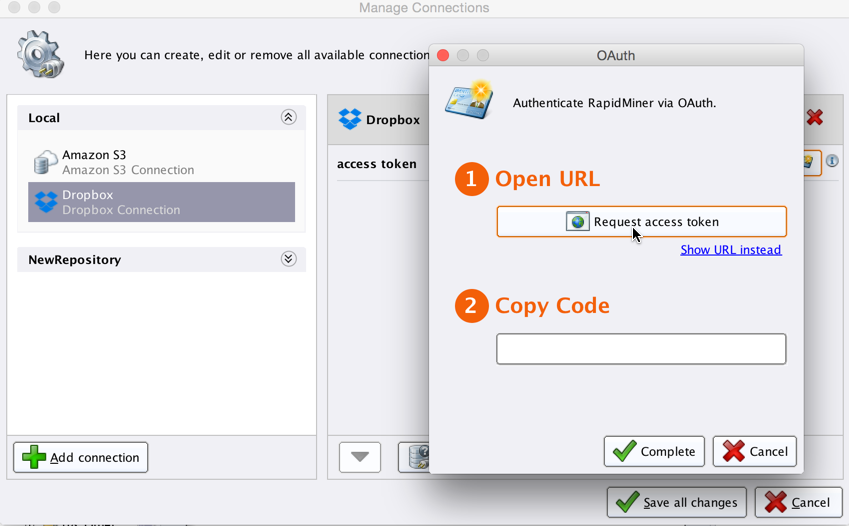
ClickAllowto give RapidMiner access to your Dropbox account and to generate a token:
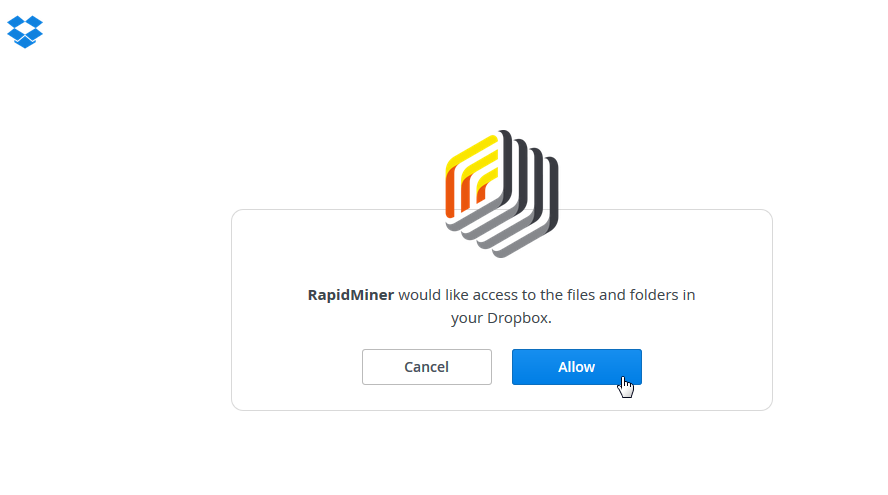
Copy the access token:
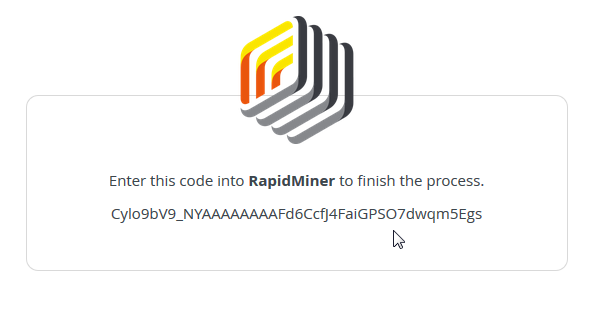
Return to RapidMiner Studio, enter the access token, and click
 Complete:
Complete: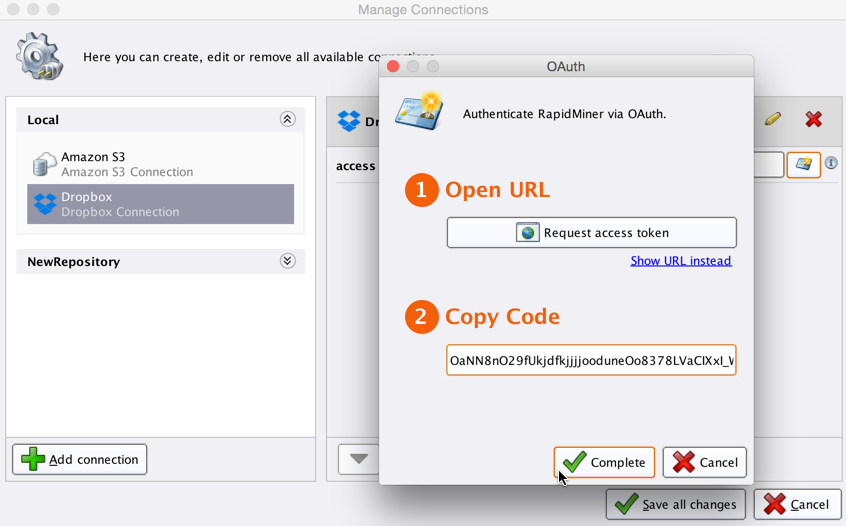
While not required, we recommend testing your new Dropbox connection by clicking the
 Testbutton at the bottom of theManage Connectionswindow:
Testbutton at the bottom of theManage Connectionswindow: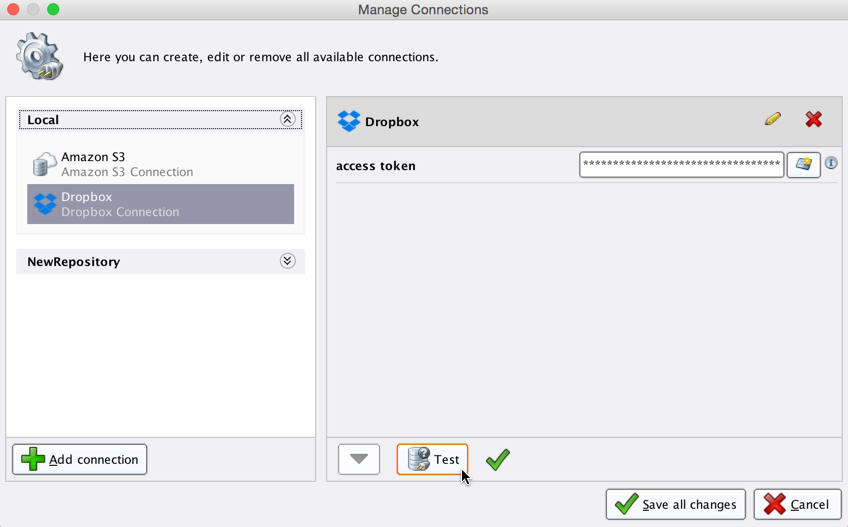
If the test fails, check whether you copied the complete access token.
Close theManage Connectionsdialog by clicking on
 保存所有更改.
保存所有更改.
You have successfully connected RapidMiner Studio to your Dropbox account. The next sections will show you how to use this connector to read and write files.
Browse and read files
Reading files from Dropbox is incredibly simple using the Dropbox Connector:
Click on theRead Dropboxoperator in theProcessview. Select your Dropbox connection from theconnectiondrop down menu in the operator parameters:

Click on thefilechooser button
 to view the files in your Dropbox account. Select the file that you want to load and click
to view the files in your Dropbox account. Select the file that you want to load and click Open.
Open.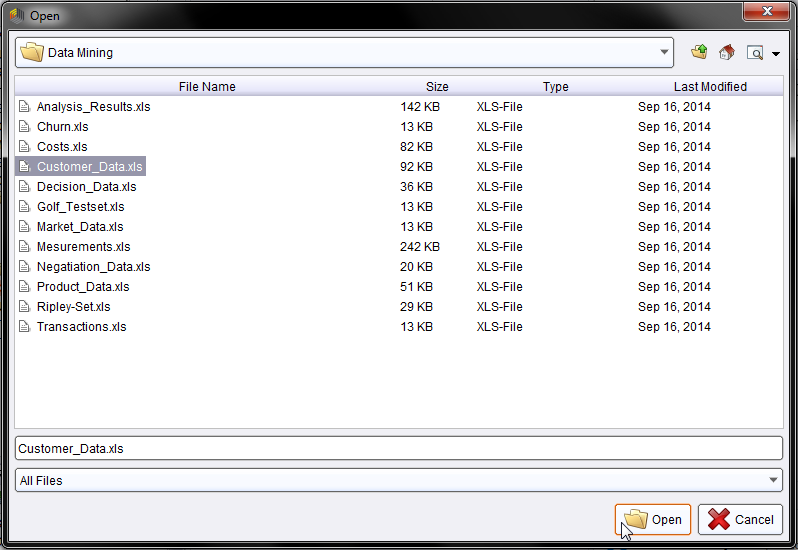
Connect the output ofRead Dropboxto a suitable operator. In this case, we selected a .XLS file, so we will connect the output to aRead Exceloperator:

As you can see in this example, theRead Dropboxoperator works similarly to theRead Fileoperator. It onlyloadsthe selected file, but does notprocessit. The actual processing of the data takes place in additional operators such asRead Excel,Read CSV, orRead XML.
Write files to your Dropbox account
TheWrite Dropboxoperator works similarly to theRead Fileoperator: it expects a file as input (provided by another operator) and stores it at the specified location in your Dropbox account.
The simplest example using theWrite Dropboxoperator would be to connect it to the output ofRead Dropbox. This setup would simply copy a file from one location in your Dropbox account to another without changing the file itself.
We will configure theWrite Dropboxoperator from the end of theprevious section.
Click on theWrite Dropboxoperator, select your Dropbox connection in theParameters看来,and select a location for the new file via the file chooser
 . Note that by default theWrite Dropboxoperator does not overwrite existing files. Instead, a number is appended to the file name. For example, ifAnalysis_Results.xlsalready exists, the new file would be stored asAnalysis_Results (1).xls. You can disable this feature by checking theoverwriteparameter (visible inExpert Mode).
. Note that by default theWrite Dropboxoperator does not overwrite existing files. Instead, a number is appended to the file name. For example, ifAnalysis_Results.xlsalready exists, the new file would be stored asAnalysis_Results (1).xls. You can disable this feature by checking theoverwriteparameter (visible inExpert Mode).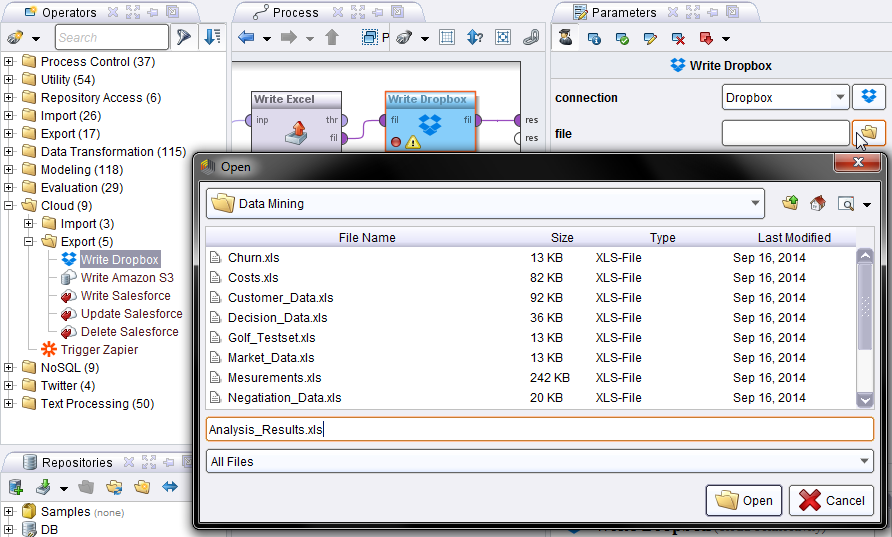
Run
 the process and navigate to the location you specified. In the Dropbox online view, you can see thatAnalysis_Results.xlswas successfully updated just a few seconds ago!
the process and navigate to the location you specified. In the Dropbox online view, you can see thatAnalysis_Results.xlswas successfully updated just a few seconds ago!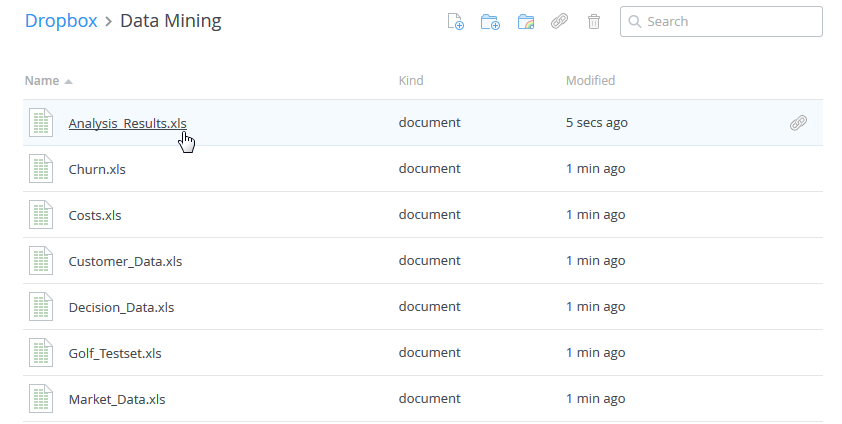
You should now see the new file stored via theWrite Dropboxoperator.












